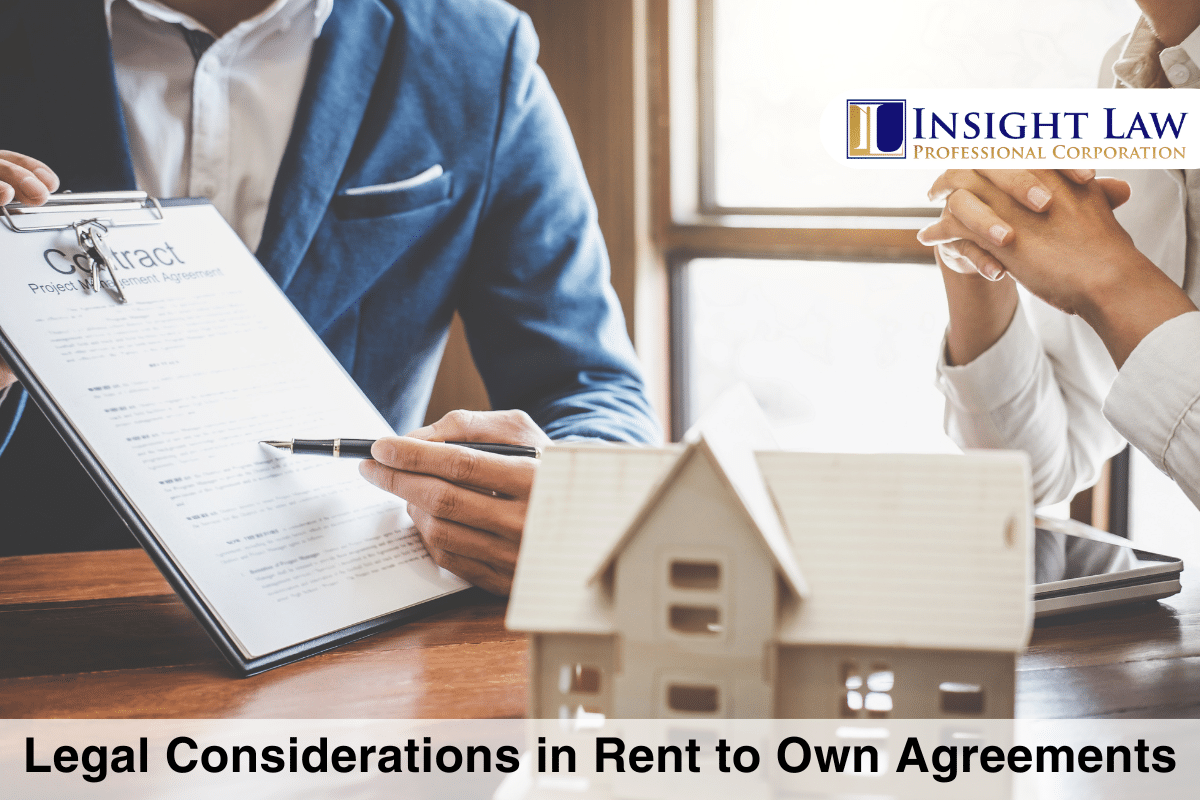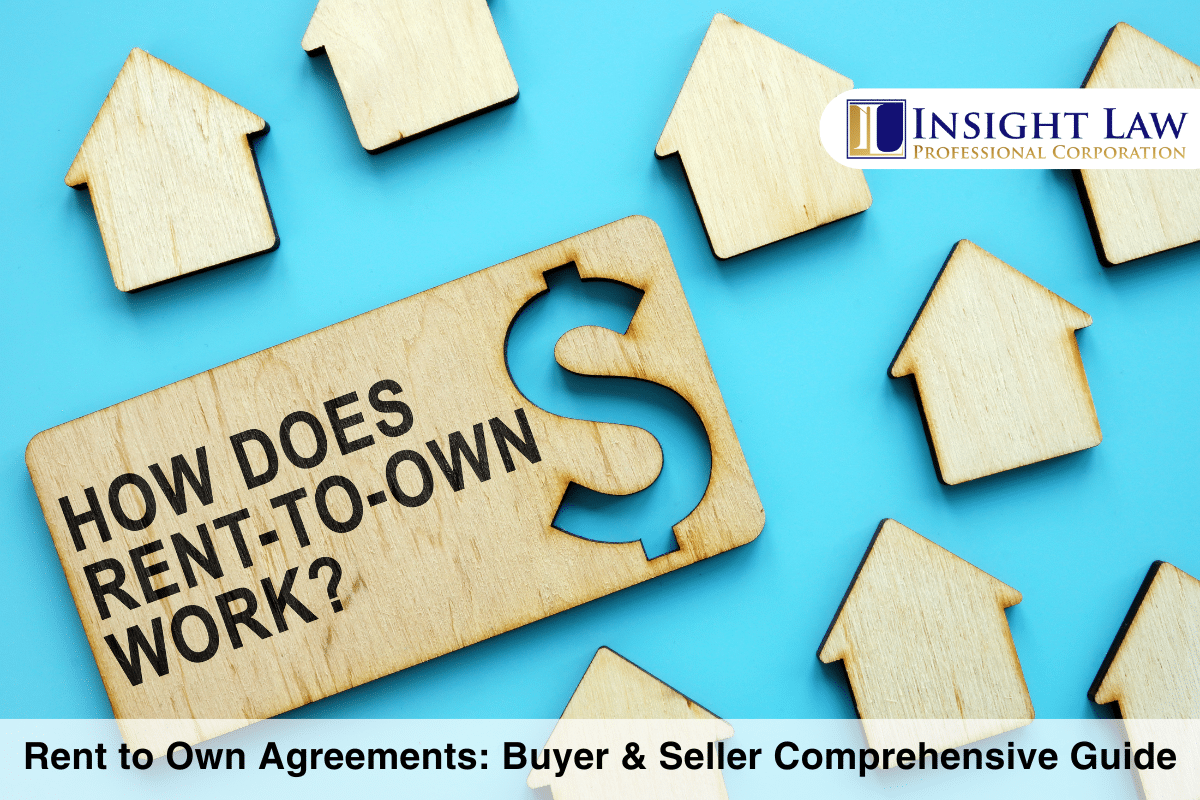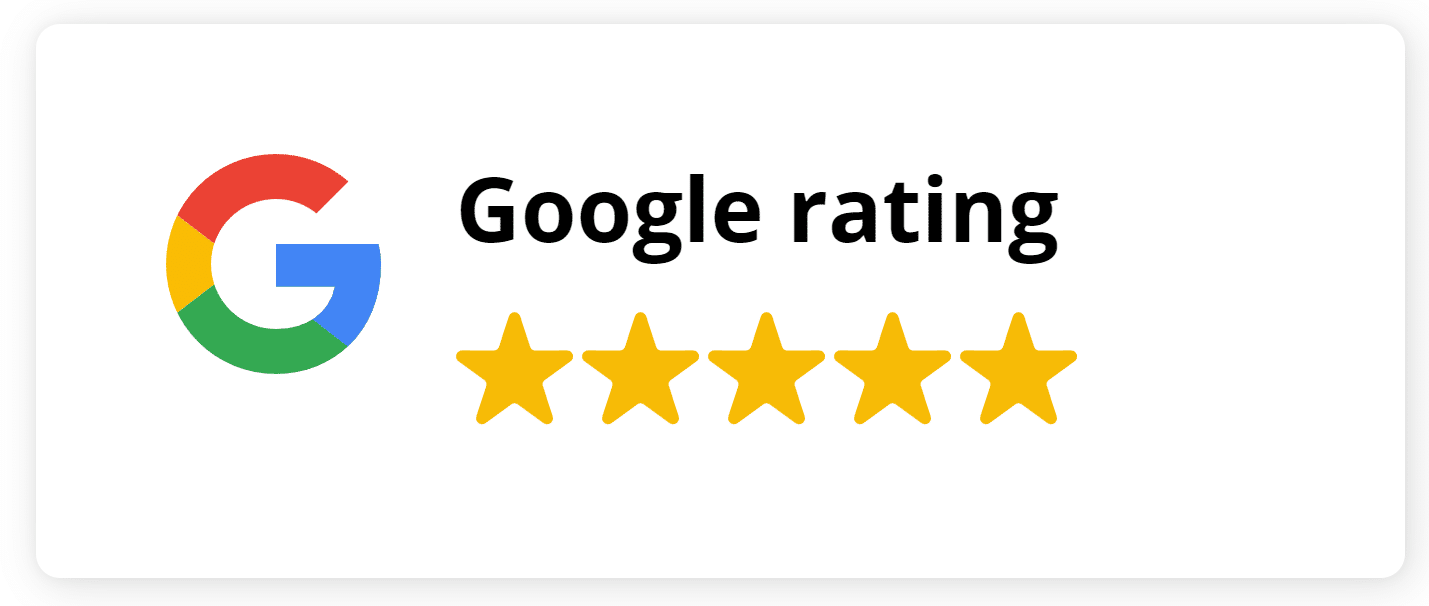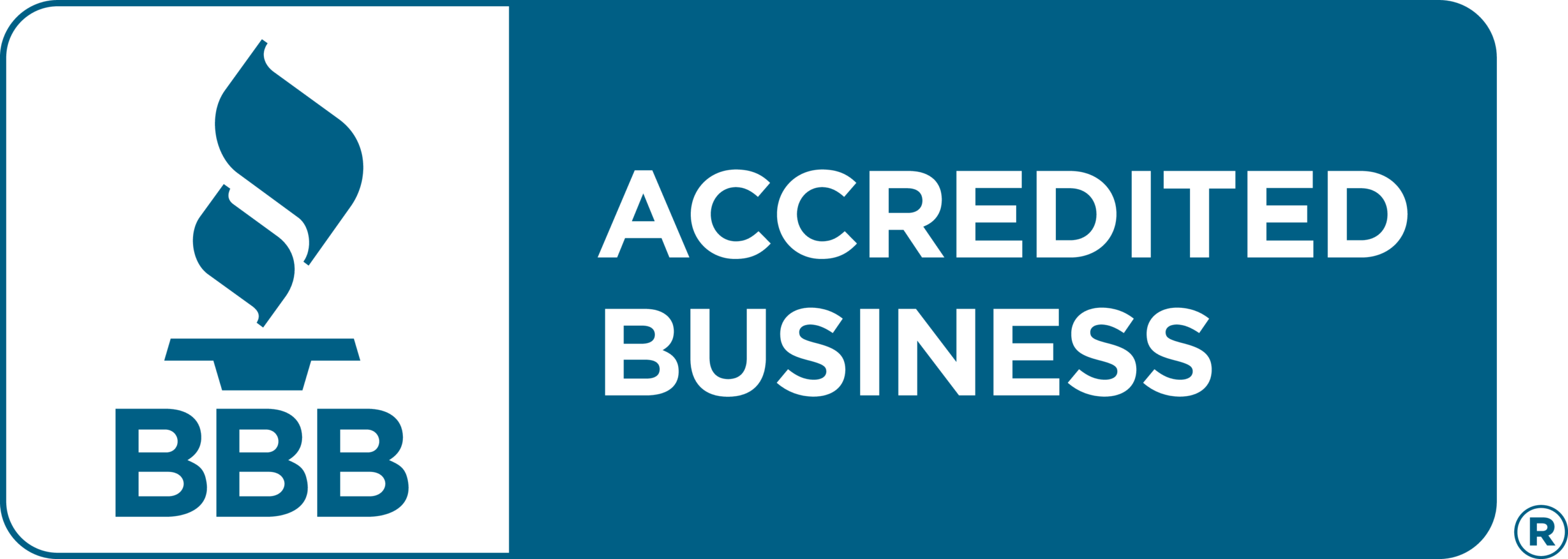Rent to own agreements are gaining traction in Ontario as an attractive pathway to homeownership for many aspiring buyers who may not qualify for traditional mortgages. These agreements provide a unique opportunity for individuals to secure a property while working on their financial readiness, offering a blend of renting and the potential for eventual ownership. For sellers, rent to own agreements can provide a steady rental income while maintaining the prospect of a future sale, making it a win-win arrangement for both parties.
In this comprehensive guide, we will delve into the nuances of rent to own agreements, exploring their benefits, drawbacks, legal considerations, and the steps involved in executing such agreements. Whether you are a prospective buyer looking to understand how these agreements can help you achieve homeownership or a seller seeking to leverage this approach to attract more buyers, this guide aims to provide you with the essential information needed to navigate the rent to own landscape in Ontario effectively.
At Insight Law Professional Corporation, we are a real estate law firm with experience helping homeowners throughout Ontario. If you are considering a real estate transaction or advice or drafting for your rent to own agreement, we invite you to contact us today to schedule a consultation.
What is a Rent to Own Agreement?
A rent to own agreement, also known as a lease-option or lease-purchase agreement, is a contractual arrangement where a tenant leases a property for a specified period with the option to purchase it at the end of the lease term. This arrangement enables tenants to secure a property while improving their financial or creditworthiness, facilitating future homeownership. It provides a structured pathway for tenants who may not immediately qualify for traditional mortgages to own a home eventually.
Key Components
The key components define the framework within which the agreement operates, ensuring the tenant and the landlord have clear guidelines and responsibilities. Some of the key components include:
Lease Term: The lease term typically ranges from one to three years, though the duration can vary depending on the agreement between the tenant and the landlord. During this period, the tenant pays rent and an additional amount that goes towards the eventual purchase price of the property. The length of the lease term should be sufficient to allow the tenant to improve their financial situation and secure a mortgage by the end of the lease.
Monthly Rent: Monthly rent in a rent to own agreement often includes a premium above the standard market rent. This premium is credited towards the purchase price, helping the tenant build equity in the property over time. The agreement should clearly outline the exact amount of rent and the portion allocated towards the purchase price.
Option Fee: The option fee is a nonrefundable payment made by the tenant at the start of the lease. This fee grants the tenant the exclusive right to purchase the property at the end of the lease term. The amount of the option fee can vary, but it is typically a percentage of the property’s purchase price. It assures the landlord of the tenant’s commitment to buying the property.
Purchase Price: The property’s purchase price is often predetermined at the inception of the lease agreement. This price remains fixed regardless of market fluctuations, providing clarity and certainty for both parties. Knowing the purchase price in advance allows the tenant to plan their finances and work towards securing the necessary funding.
Maintenance Responsibilities: Maintenance responsibilities in a rent to own agreement should be explicitly outlined to prevent disputes. These responsibilities typically specify which party is responsible for the upkeep and repairs of the property during the lease term. While some agreements may require the tenant to handle all maintenance, others may split these duties between the tenant and the landlord.

Types of Rent to Own Agreements
The two main types are lease-option agreements and lease-purchase agreements, each offering different levels of commitment and flexibility.
Lease-Option Agreements
Lease-option agreements provide the tenant with the option, but not the obligation, to purchase the property at the end of the lease term. This type of agreement offers flexibility, allowing the tenant to walk away if they choose not to buy the property without facing severe legal repercussions. However, it is important to note that the option fee paid at the beginning of the lease is typically non-refundable. Additionally, any extra payments made towards the purchase price are forfeited if the tenant decides not to proceed with the purchase. This option can be particularly attractive to tenants uncertain about their future financial situation or the property itself but want to keep the possibility of ownership open.
For landlords, lease-option agreements provide a steady stream of rental income with the potential for a sale. While they risk the tenant deciding not to buy, the non-refundable option fee compensates for this uncertainty. This type of agreement can attract a broader range of tenants, including those who are not yet financially ready to commit to a purchase but are working towards it. It’s a middle-ground approach that benefits both parties without locking them into an obligatory sale.
Lease-Purchase Agreements
Lease-purchase agreements, on the other hand, obligate the tenant to purchase the property at the end of the lease term. This agreement is more binding, providing greater assurance to the property owner that the sale will eventually go through. For the tenant, entering into a lease-purchase agreement requires a higher level of commitment and certainty about their ability to secure financing and complete the purchase by the end of the lease term. Failure to follow through can lead to legal and financial consequences, making it essential for tenants to be confident in their financial trajectory and readiness to buy.
From the landlord’s perspective, lease-purchase agreements offer more security and predictability. Knowing that the tenant is committed to buying the property provides peace of mind and allows for more concrete financial planning. However, it also means that landlords must be diligent in selecting tenants who demonstrate financial stability and reliability. This agreement type suits situations where both parties are fairly certain of the tenant’s eventual ability to purchase the property and are looking for a more definitive pathway to ownership.
Summary of Types of Rent to Own Agreements
| Type | Description | Tenant Flexibility | Landlord Assurance |
|---|---|---|---|
| Lease-Option Agreements | Provides the option, but not the obligation, to purchase at the end of the lease term. | High (Can choose not to purchase) | Moderate (Non-refundable option fee) |
| Lease-Purchase Agreements | Obligates the tenant to purchase the property at the end of the lease term. | Low (Must purchase at lease end) | High (Guaranteed sale if tenant complies) |
By understanding the nuances between lease-option and lease-purchase agreements, tenants and landlords can make informed decisions aligning with their financial goals and property plans. This clarity helps mitigate risks and ensures that both parties are on the same page throughout the lease term and beyond.
As a real estate law firm, we guide tenants and landlords through these agreements. Our experienced team ensures all terms and conditions are clearly defined and favourable. Whether you’re considering a lease option or lease-purchase agreement, we provide personalized advice and strategic planning for a successful outcome. Learn more about how we can assist you with your rent to own agreement and secure your path to homeownership with confidence. Contact us today to schedule a consultation.

Benefits of Rent to Own Agreements
Rent to own agreements can offer advantages for buyers and sellers, providing unique opportunities and solutions in the real estate market.
Benefits for Buyers
Building Equity: One of the primary benefits for buyers in a rent to own agreement is the ability to build equity while renting. A portion of each monthly rent payment is credited towards the future purchase price, allowing tenants to accumulate a down payment gradually. This setup makes it easier for tenants to secure financing when buying the property, as they have already invested in their future home.
Flexible Terms: Rent to own agreements often provide more flexible terms than traditional mortgages. This flexibility can include negotiating the purchase price, lease term, and monthly payments tailored to the tenant’s financial situation. For individuals with less-than-perfect credit or those needing more time to save for a down payment, these agreements offer a valuable pathway to homeownership without the immediate financial pressure of traditional financing.
Opportunity to Save for Down Payment: Rent to own agreements allow buyers to save for a down payment over time. Instead of needing a lump sum upfront, tenants can make smaller, incremental payments that contribute to the purchase price. This gradual saving process can make homeownership more attainable for those who might struggle to save a large amount quickly, easing the transition into owning a home.
Benefits for Sellers
Steady Rental Income: For sellers, rent to own agreements provide a steady stream of rental income throughout the lease term. This can be particularly beneficial in uncertain real estate markets, ensuring that the property generates revenue even before it is sold. The additional income from the option fee and higher rent payments can also help offset potential market fluctuations and provide financial stability.
Potential for Higher Sale Price: Rent to own agreements can potentially lead to a higher sale price. By agreeing on the purchase price at the start of the lease, sellers can lock in a value that reflects future market appreciation. Additionally, the tenant’s investment in the property through their rental payments and option fee can make them more likely to complete the purchase, reducing the likelihood of the property sitting unsold.
Larger Pool of Potential Buyers: Offering a rent to own option may attract more potential buyers, including those not qualifying for traditional financing immediately. This broader market appeal can increase the chances of finding a committed buyer and reduce the time the property remains on the market. Selling can enhance the chances of a successful transaction by appealing to a wider range of buyers.
Get a Free Quote for Your Real Estate Transaction
Drawbacks of Rent to Own Agreements
While rent to own agreements offer many benefits, they also have certain drawbacks that both buyers and sellers should consider.
Drawbacks for Buyers
Higher Rental Payments: One of the main drawbacks for buyers is the potential for higher rental payments. Rent to own agreements often include a premium on the monthly rent, with a portion going toward the future purchase price. This can raise the overall renting cost higher than traditional rental agreements, potentially straining the tenant’s budget.
Risk of Losing Investment: If the tenant decides not to purchase the property or cannot secure financing by the end of the lease term, they risk losing their investment. The option fee and any additional payments made towards the purchase price are typically non-refundable, meaning the tenant could lose significant money if they choose not to or cannot complete the purchase.
Potential Legal Issues: Rent to own agreements can be complex and may lead to legal issues if not carefully structured. Ambiguous terms, disputes over maintenance responsibilities, or failure to adhere to the agreement’s conditions can result in costly legal battles. Both parties must understand their rights and obligations fully and seek legal advice when entering into such agreements to avoid potential pitfalls.
Drawbacks for Sellers
Risk of Default: One of the primary risks for sellers is the possibility of the tenant defaulting on the agreement. If the tenant fails to make rental payments or decides not to purchase the property, the seller may have to find a new tenant or buyer. This can lead to potential financial losses and delays in selling the property, disrupting the seller’s financial plans.
Delayed Sale: Rent to own agreements can delay the final sale of the property. While the lease term allows tenants to prepare for purchase, it also means that sellers must wait longer to complete the transaction. This delay can be a drawback for sellers who need to liquidate their assets quickly or move on to other investments, as they are tied to the property for the duration of the lease.
Potential Maintenance Costs: During the lease term, maintenance responsibilities can become a point of contention. While some agreements specify that tenants are responsible for maintenance, others may place this burden on the seller. Unclear or disputed maintenance terms can lead to unexpected costs and disagreements, impacting the overall profitability of the arrangement and creating tension between the parties involved.

Legal Considerations in Rent to Own Agreements
Essential Legal Terms
Essential legal terms lay the foundation for a clear and mutually beneficial arrangement. Some of the rent to own agreement legal terms include:
Option Fee: The Option Fee is a non-refundable payment that grants the tenant the exclusive right to purchase the property at the end of the lease term. This fee acts as a commitment from the tenant, assuring the landlord while also giving the tenant a secured opportunity to buy the home.
Purchase Price: The Purchase Price is the agreed-upon amount the tenant can buy the property. This price is often determined at the start of the lease and remains fixed regardless of market fluctuations. This fixed price provides clarity and certainty for both parties, allowing the tenant to plan their finances accurately while ensuring the landlord has a guaranteed sale price.
Lease Term: The Lease Term refers to the duration of the rental period before the option to purchase can be exercised. This term is typically agreed upon at the beginning of the contract and can range from one to several years, giving tenants time to prepare financially for the purchase.
Rent Credit: Rent Credit is another important term, referring to the portion of the monthly rent credited toward the purchase price. This allows tenants to build equity and reduces the amount needed to finance the purchase at the end of the lease term.
Maintenance Responsibilities: Maintenance Responsibilities must be clearly outlined to prevent disputes. These responsibilities specify which party is responsible for the upkeep and repairs of the property during the lease term, ensuring both parties understand their obligations and avoid misunderstandings.
Right of First Refusal: Right of First Refusal gives the tenant the first opportunity to buy the property if the landlord decides to sell it during the lease term. This clause protects the tenant’s interest and provides an additional layer of security in the agreement.
Default Clauses: Default Clauses outline the consequences if either party fails to comply with the terms of the agreement. For instance, they can specify what happens if the tenant misses a rent payment or the landlord fails to maintain the property as agreed.
Renewal Option: The Renewal Option allows the tenant to extend the lease term under predefined conditions. This can be particularly useful if the tenant needs more time to secure financing or wants to continue renting before committing to the purchase.
Closing Costs: Closing Costs are the fees associated with finalizing the purchase of the property. These costs can include legal fees, inspection fees, and other expenses. The agreement should specify who is responsible for these costs.
Title Clearance: Title Clearance ensures that the property has a clear title and is free from any liens or encumbrances, which is crucial for the tenant to secure financing. The landlord must provide a clear title at the end of the lease term to facilitate the purchase.
Option Period: The Option Period refers to the specific timeframe within which the tenant can exercise their option to purchase the property. This period is typically defined in the agreement and ensures that both parties clearly understand when the purchase option is valid.
Escrow Account: An Escrow Account may be established to hold funds such as the option fee or portions of the rent credited towards the purchase price. This account ensures the funds are managed securely and appropriately per the agreement’s terms.
Appraisal Contingency: The Appraisal Contingency clause allows the tenant to withdraw from the agreement if the property’s appraised value is significantly lower than the agreed-upon purchase price. This clause protects the tenant from overpaying for the property.
Inspection Contingency: The Inspection Contingency clause permits the tenant to inspect the property before finalizing the purchase. The tenant can negotiate repairs or withdraw from the agreement if significant issues are found.
Mortgage Clause: The Mortgage Clause outlines the tenant’s obligation to obtain financing to purchase the property. This clause specifies the tenant’s timeframe to secure a mortgage and may include terms for extending the financing period if necessary.
Subletting Clause: The Subletting Clause determines whether the tenant can sublet the property during the lease term. This clause protects the landlord’s interest by ensuring responsible tenants occupy the property.
Insurance Requirements: Insurance Requirements specify the types of insurance the tenant and landlord must maintain during the lease term. This typically includes property insurance, liability insurance, and other relevant coverage to protect both parties’ interests.
Repairs and Improvements: The Repairs and Improvements clause details the procedures and responsibilities for repairing or improving the property. This ensures that both parties agree upon any changes to the property and that responsibilities for costs are clearly defined.
Early Termination Clause: The Early Termination Clause outlines the conditions under which the lease agreement can be terminated before the end of the lease term. This clause specifies any penalties or requirements for early termination, providing a clear exit strategy if needed.
Arbitration Clause: The Arbitration Clause provides a mechanism for resolving disputes between tenants and landlords without litigation. This clause specifies the arbitration process and helps to manage conflicts efficiently and fairly.
Rights and Responsibilities
Buyer’s Rights and Responsibilities: Buyers in a rent to own agreement have the right to exclusive use of the property during the lease term and the option to purchase it at the end. Their responsibilities typically include making timely rental payments, maintaining the property, and adhering to the terms of the agreement. Buyers must also secure financing by the end of the lease term if they intend to exercise the purchase option.
Seller’s Rights and Responsibilities: Sellers have the right to receive rental payments and the option fee. They are responsible for maintaining the property if specified in the agreement, ensuring clear title to the property, and facilitating the sale process. Sellers must also be prepared to honour the purchase price agreed upon at the start of the lease, even if the market value changes.
Legal Documentation
Proper legal documentation includes the lease agreement, option agreement, and addendums detailing specific terms such as maintenance responsibilities and purchase conditions. Both parties should seek legal advice to draft and review these documents to protect their interests and avoid potential disputes.
Lease Period
Payment Terms: During the lease period, the tenant must make regular rental payments as agreed upon. These payments often include a portion that goes toward the future purchase price. Tenants typically must make these payments on time to avoid defaulting on the agreement.
Maintenance Responsibilities: The lease period also involves adhering to the maintenance responsibilities outlined in the agreement. Whether the tenant or the seller is responsible for specific maintenance tasks should be clearly defined to prevent disputes. Proper maintenance ensures the property remains in good condition, preserving its value.
Preparing for Purchase: Throughout the lease period, the tenant should prepare for the eventual purchase. This includes saving for a down payment, improving their credit score, and securing financing. Being proactive during this time can help ensure a smooth homeownership transition at the lease term’s end.
Option to Purchase
Exercising the Option: At the end of the lease period, the tenant has the option to purchase the property. To exercise this option, the tenant must notify the seller within the timeframe specified in the agreement. This notification should be in writing and confirm the tenant’s intention to buy the property.
Financing the Purchase: Once the option to purchase is exercised, the tenant must secure financing for the purchase. This may involve obtaining a mortgage or other financing options. The tenant needs to work with lenders to finalize the loan and ensure the necessary funds are available for the purchase.
Legal Considerations: The final step in the option-to-purchase phase involves addressing any legal considerations. This includes reviewing the agreement’s terms, ensuring compliance with local laws, and finalizing the purchase contract. Legal professionals can provide valuable assistance during this phase to ensure a smooth and legally compliant transaction.
Closing Process
Finalizing the Purchase: The closing process involves finalizing the purchase of the property. This includes completing necessary inspections, obtaining financing, and signing the final purchase agreement. Both parties must ensure all agreement terms are met, and the necessary paperwork is completed.
Transfer of Ownership: Once the purchase is finalized, the next step is the transfer of ownership. This involves transferring the property title from the seller to the buyer. A real estate lawyer must make the transfer to ensure that the buyer is the legal owner of the property.
Tips for Buyers and Sellers
Successfully navigating a rent to own agreement requires careful planning and strategic thinking for buyers and sellers. Here are some detailed tips to help ensure a smooth and successful experience.
Tips for Buyers
Evaluating the Property: Before committing to a rent to own agreement, buyers should comprehensively evaluate the property. This includes scheduling professional inspections to identify structural, plumbing, electrical, and other potential concerns. Additionally, researching the property’s history, including previous ownership, past repairs, and any historical issues, is crucial. Evaluating the neighbourhood for safety, amenities, and future development plans can also provide valuable insight. Thorough property evaluation ensures that buyers make an informed decision and helps mitigate the risk of encountering unforeseen problems later on.
Negotiating Terms: Buyers should approach the negotiation of terms with a clear understanding of their needs and financial capabilities. Key negotiation aspects include the purchase price, which should reflect current market conditions and future value projections, the lease term, which should provide ample time to improve financial standing and secure financing, and any additional fees or responsibilities such as maintenance costs or homeowner association dues. Buyers should also negotiate rent credits, portions of the monthly rent applied toward the purchase price. Effective negotiation can result in a more favourable agreement, ensuring the terms align with the buyer’s long-term goals.
Preparing for Purchase: Throughout the lease period, buyers should proactively prepare for the eventual purchase of the property. This preparation includes saving for a down payment, which might involve setting up a dedicated savings plan or investment strategy to accumulate the necessary funds. Improving one’s credit score is also essential; buyers should regularly review their credit reports, address discrepancies, and manage debts to enhance their creditworthiness. Securing financing involves building relationships with potential lenders, understanding different mortgage options, and possibly obtaining pre-approval for a loan. Consistent preparation helps ensure buyers are financially ready to complete the purchase at the end of the lease term.
Tips for Sellers
Setting Terms: Sellers must establish attractive yet realistic terms to potential buyers while safeguarding their interests. This includes setting a competitive purchase price based on a thorough market analysis and considering future property value appreciation. The lease term should be balanced, providing buyers enough time to prepare for purchase without extending it unnecessarily. The option fee should be set at a level that reflects the commitment required from the buyer but is still affordable. Specifying clear terms for rent credits, maintenance responsibilities, and penalties for non-compliance can help create a structured and fair agreement. Well-set terms can attract committed buyers and increase the chances of a successful sale.
Screening Tenants: Thoroughly screening potential tenants is crucial to ensure they are financially capable and likely to follow through with the purchase. Sellers should review credit reports to assess the tenant’s financial history and verify income to ensure they can afford the monthly payments. Checking references from previous landlords can provide insights into the tenant’s reliability and behaviour. Additionally, conducting interviews can help gauge the tenant’s commitment and understanding of the rent to own process. Proper screening reduces the risk of default and ensures that the property is rented to responsible and motivated tenants.
Managing the Lease Period: Throughout the lease period, sellers should actively manage the property and maintain open communication with the tenant. This involves promptly addressing maintenance issues, conducting regular property inspections, and ensuring the tenant complies with the agreement terms. Collecting rental payments promptly and promptly addressing any late payments or disputes is also important. Establishing a good landlord-tenant relationship can help resolve issues amicably and ensure that the property remains well-maintained and that the tenant feels supported. Effective management of the lease period contributes to a smoother transition to the eventual sale.
Common Pitfalls and How to Avoid Them
Both buyers and sellers must be aware of common pitfalls in rent to own agreements and take proactive steps to avoid them.
For Buyers
Inadequate Property Evaluation: A significant buyer pitfall is failing to adequately evaluate the property before agreeing. Buyers should conduct thorough inspections and research the property’s history to uncover potential issues. Engaging professional inspectors to assess the structural integrity, electrical systems, plumbing, and other critical aspects of the property is essential. Additionally, researching the neighbourhood’s safety, amenities, and future development plans can provide a broader understanding of the property’s value and livability. Proper evaluation ensures that buyers make informed decisions and reduces the risk of encountering hidden issues that could impact the purchase.
Failure to Secure Financing: Another common pitfall for buyers is failing to secure financing by the end of the lease term. Buyers should work with lenders throughout the lease period to improve their credit scores and secure financing. This involves regularly checking credit reports, managing debts, and addressing issues that could negatively impact creditworthiness. Establishing a relationship with a mortgage broker or lender early on can help improve financial health and navigate the mortgage process. Proactively securing financing ensures buyers are prepared to complete the purchase when the lease term ends.
For Sellers
Inadequate Tenant Screening: One of the primary risks for sellers is failing to screen potential tenants adequately. Sellers should review credit reports, verify income, and check references to ensure that tenants are financially stable and capable of completing the purchase. Conducting interviews and possibly requiring a rental application can provide additional insights into the tenant’s commitment and financial responsibility. Proper screening helps sellers identify reliable candidates and reduces the risk of default, ensuring that the property is occupied by tenants likely to follow through with the purchase.
Unclear Maintenance Responsibilities: Failing to define maintenance responsibilities clearly can lead to disputes and additional costs for sellers. Sellers should outline specific maintenance tasks in the agreement and ensure that both parties understand their obligations. This includes specifying who is responsible for routine maintenance, repairs, and any improvements needed during the lease term. Providing a detailed maintenance checklist and setting up regular property inspections can help ensure the property is properly maintained. Clear maintenance terms prevent misunderstandings and ensure the property remains in good condition throughout the lease period.
Summary
Remembering that a rent to own agreement in Ontario can involve complex legal issues and requirements is important. You should work with an experienced real estate lawyer throughout the process to ensure that all legal requirements are met and that the transaction proceeds smoothly.
The information provided above is of a general nature and should not be considered legal advice. Every transaction or circumstance is unique, and obtaining specific legal advice is necessary to address your particular requirements. Therefore, if you have any legal questions, it is recommended that you consult with a lawyer.







